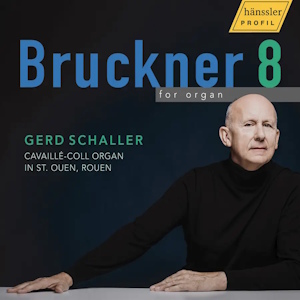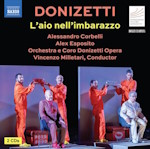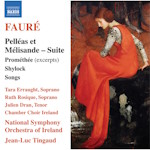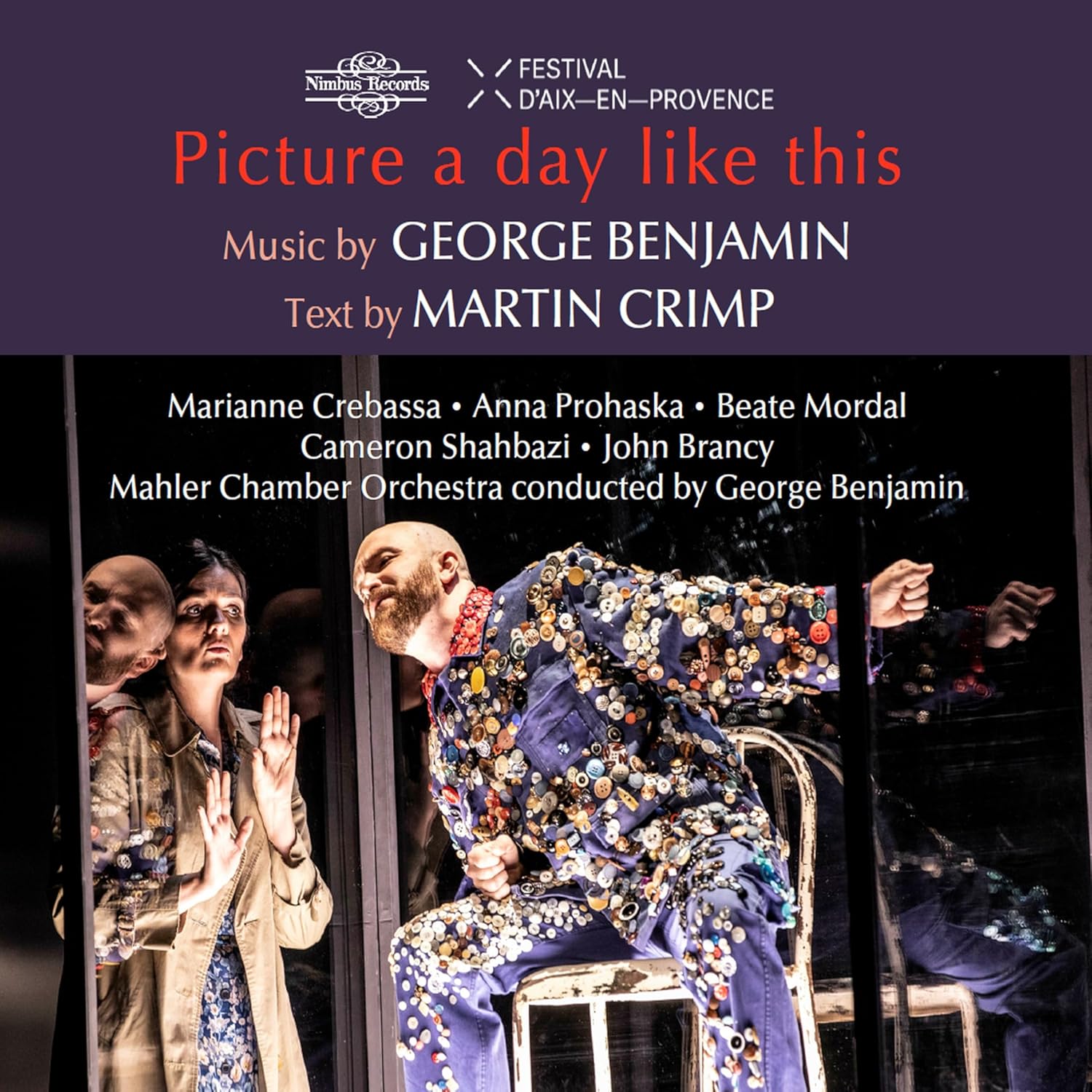
Anton Bruckner (1824-1896)
Symphony No. 8 (arr. organ Schaller)
Gerd Schaller (organ)
rec. 2024, Cavaillé-Coll organ, St Ouen, Rouen, France
Hänssler Profil PH25002 [79]
Gerd Schaller is one of the foremost exponents of Bruckner’s music active today, as a conductor, arranger, “completionist” (of the Ninth Symphony) and organist, in the distinguished company of the likes of Honeck, Poschner and – still, miraculously – Blomstedt. He has already recorded organ arrangements of Bruckner’s Fifth and Ninth Symphonies which I previously favourably reviewed and has of course already also recorded the 1888 variant Eighth Symphony as part of his BRUCKNER2024 project but here he plays his own transcription of the 1890 version on an organ aptly inaugurated in that same year and constructed by manufacturers admired by the composer himself.
In his notes, Schaller remarks upon “the instrument’s impressive monumental sound, its tremendous range of colour, its subtlety as far as it stops are concerned, and [its] almost unlimited tonal possibilities”; as such, it is ideally suited to recreating both what Bruckner would have heard and the epic quality of this, his most grandiose of symphonies. Schaller clarifies that his aim was “to create an arrangement in the spirit of the 19th century French organ symphony by Widor, Vierne, and Guilmant”, but in such a way that “can even lead to a clarification of the original work.” He provides a further, more speculative bonus in that this recording gives us “an opportunity to experience what it sounded like back then, when Bruckner enchanted people with his improvisations.” All these factors combine to create real points of interest for the Bruckner devotee.
The notes don’t say but it is likely that Maestro Schaller’s arrangement was based on familiarity with Bruckner’s 1890 manuscript, as this is available online for any interested musician to consult. At any rate, the additional bars inserted in the Haas edition are not to be heard here. Normally keyboard arrangements tend to move a little faster than orchestral originals, but this performance is a few minutes longer than Schaller’s orchestral performance by several minutes. Even so, it fits neatly onto one CD.
First impressions are very promising; the sheer amplitude of sound immediately impresses and the constant switching of voices sustains interest throughout. Jumping ahead to the finale, here, in particular, so many stops, voices, registers, dynamic variations and perspectives – please excuse my terminological inexactitude; I am no organist – are employed and explored that it sounds as if Schaller is determined to exploit the mighty instrument’s full potential to maximum effect and overwhelm the listener with the sheer weight and variety of aural “tricks” he can conjure. The coda is especially majestic; one hardly feels in any sense short-changed by the absence of a symphony orchestra, so powerful is the impact of the Rouen organ. Strangely , it is in the opening of the Adagio that I most miss those orchestral colours and textures, despite the elegance and expertise of Schaller’s transcription; organ pipes cannot shimmer and tremble with quite the same breathless suspension as strings. However, there are many beautiful things in it, such as when, near the beginning of the first movement development, Schaller substitutes for the solo horn above a quiet high violin tremolo a delicate high arpeggiated figure and the quiet, central, “bubbling” passage beginning at 12:50. The movement builds to a superb climax at 19:15 before its transcendent close – only it is a pity that this is compromised by the faint clatter of the instrument’s mechanics, which are more audible on headphones. Oddly again, whereas in his organ arrangement of the Ninth I found that the Scherzo emerged as the movement least suitable to be successfully transcribed, whereas here for me quite the reverse is true: the organ is the perfect medium for replicating the tumbling carillon effects, while the Trio is quaintly rustic and very well contrasted.
The sound is exemplary: warm, spacious and well-balanced; we are sitting in the cathedral nave. The notes, photos and presentation in general are up to Profil’s usual standards – except that I wish their graphic art designer did not think it appropriate to put grey and blue text over a black background – that renders it close to illegible.
Ralph Moore
Buying this recording via a link below generates revenue for MWI, which helps the site remain free



















